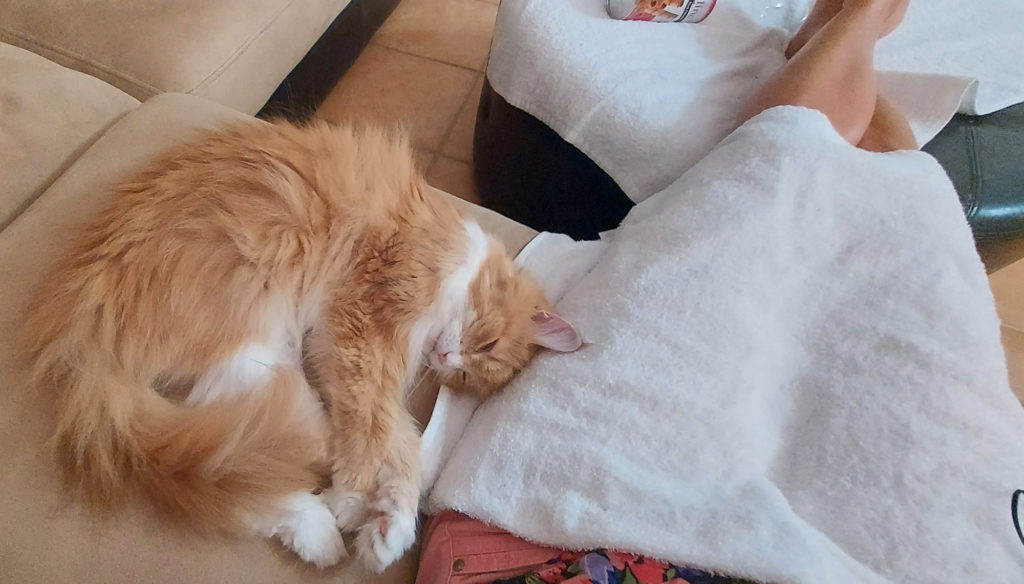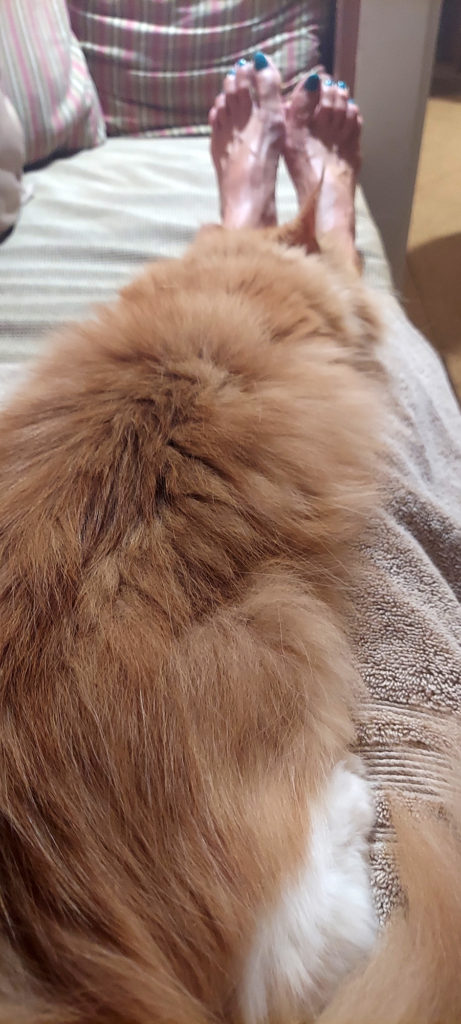It takes a lot of money, care, and attention to successfully incorporate a cat into a traveling lifestyle.
We travel with a very sweet cat, Kaylee. She’s a petite Maine Coon, very affectionate but also very nervous.
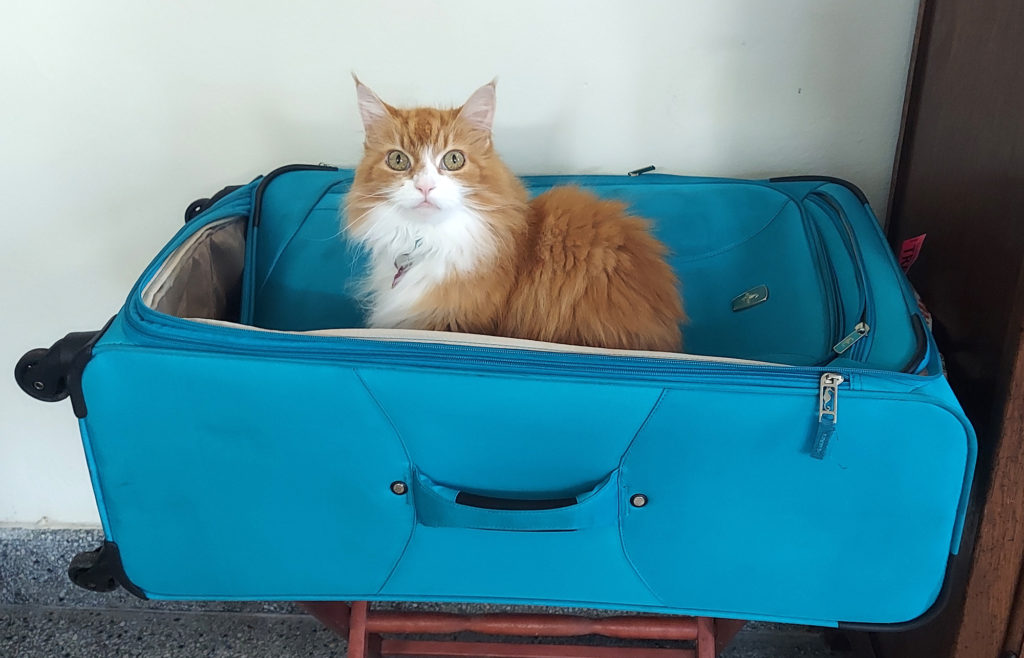
She technically belongs to our oldest child, Aryk, but as Aryk is still finishing grad school in England, Kaylee travels with us.
And she doesn’t like it.
It’s not easy for us, either. But we wouldn’t have it any other way.
Cats and Planes
Flying with a cat companion is a logistical challenge. Here are the many steps:
- You have to call the airline to reserve the cat’s spot, hoping that she won’t exceed their quota of pets per plane.
- You have to pay a fee; in the case of Southwest, it’s $95 each way.
- You have to purchase a carrier that fulfills their requirements.
- Then you have to tote her all over the airport, make sure the skittish kitty doesn’t have a panic attack, and get her through the security line without her bolting. (Hint: Make sure she’s on a leash so she can’t run, but since she can still shred you in a panic, also ask for a private screening. That’s where they take you and the cat into a small room and then take her carrier away to be x-rayed.)
- During the flight, you have to listen to her cry from inside her carrier between your feet (so comfortable). If you’re lucky, the middle seat will be clear and you can put her there instead. We have an expandable carrier, and it greatly reduces her anxiety to be able to spread out.
- During transfers between planes, you have to find a place for her to do her business in the portable litter box you packed (with the litter that made security red-flag your backpack as a security risk), and give her some food and water, all of which she will ignore.
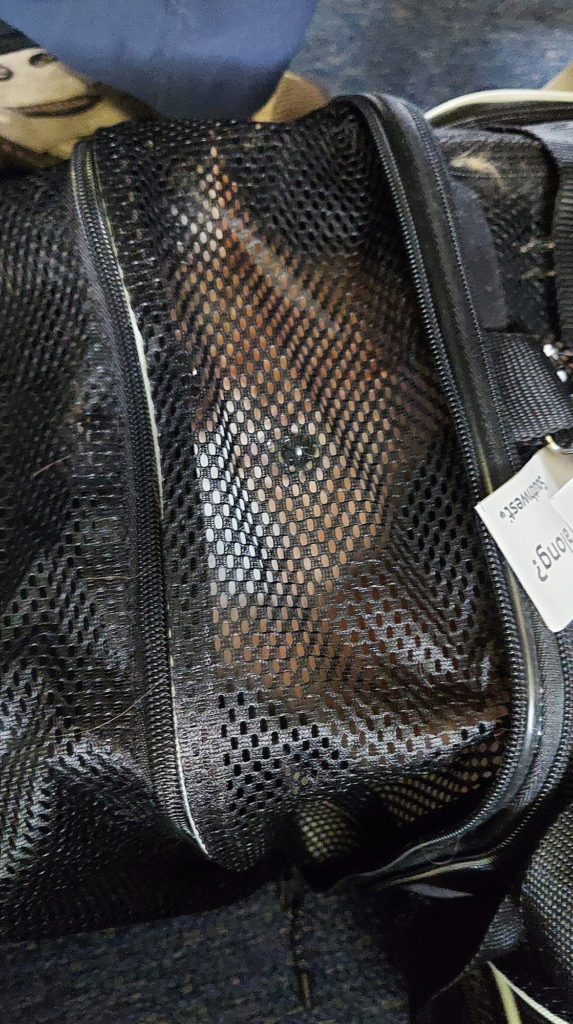
In addition, to bring Kaylee to Puerto Rico, we had to get an international health certificate, which entailed finding a specific kind of vet and paying $240 for the paperwork, an extra exam, and extra shots. And then the authorities in PR didn’t even ask to see any of it! We have done this twice. I spoke to a dog owner here who did it for three dogs, at much greater expense because of their large size, and no one asked to see their paperwork, either. I know if we skip this step, though, the authorities will ask for it and send her back to the States.
Hiding Places
Kaylee can always tell when we are about to move. When our suitcases come out, she starts looking for hiding places — and we start looking for ways to keep her out of those hiding places. We once had to practically disassemble a bed in a motel when she climbed up inside the box frame.
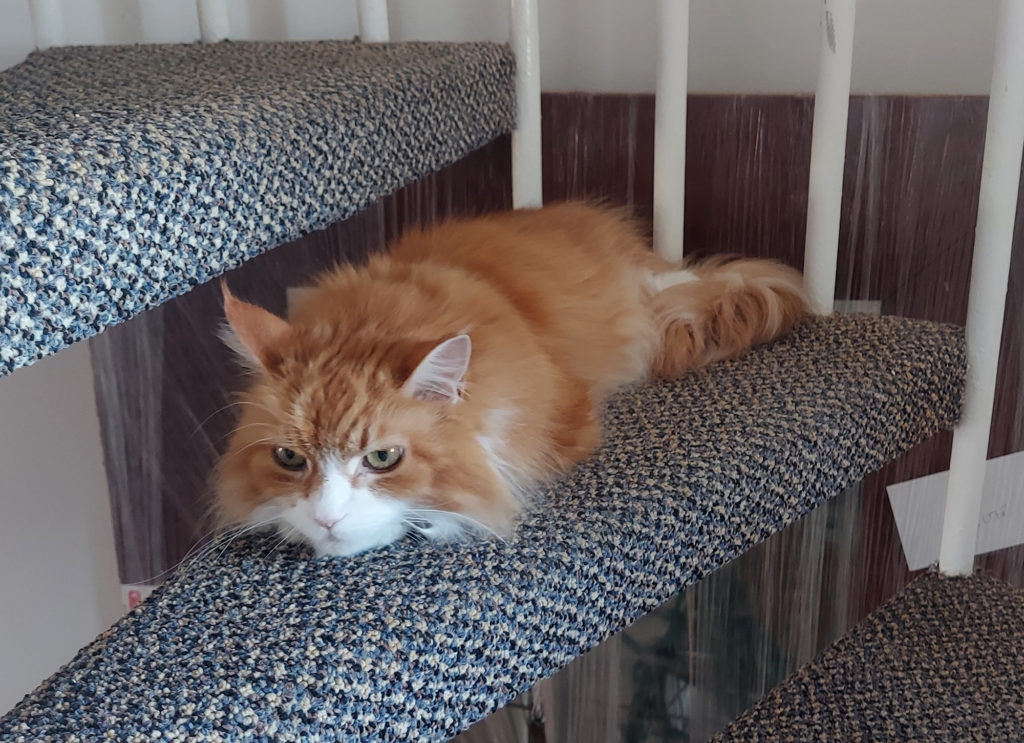
Music and Meds
Alleviating Kaylee’s anxiety about flying is crucial, so we got gabapentin, an anti-anxiety medicine, from the vet, which has helped Kaylee endure the terrifying airport screenings and long periods stuck in the carrier. Usually. It does wear out, though. You can tell because she starts thrashing and meowing. A friend who operates a doggie daycare suggested I play a calming playlist from Amazon music. This works miracles! I just place the phone on her carrier to act as her private concert hall, and she is calmed instantly. Thank you, Cesca Ferrante Segalas!
Managing Feline Anxiety While Living as Nomad
Cats like routine, and life is always changing when you travel. We manage Kaylee’s stress as best we can, but there’s a limit to what we can do. Sometimes local cats meow outside the windows at night, or come up to the door during the day. Humans shove her into carriers with no warning, and sometimes leave her there for hours while we travel in cars or planes. Food on the road is inconsistent, depending on what’s available where we are loving at the time. The environment changes monthly, when we move to a new condo. (This is part of the reason we bought the house in Cabo Rojo.)
Kaylee’s buddy Ellie, our Russian Blue who lives at college with Gavin, may be in the house for months (over summer break), and then, just when they have finally adjusted to each other (again), will abruptly disappear with no explanation.
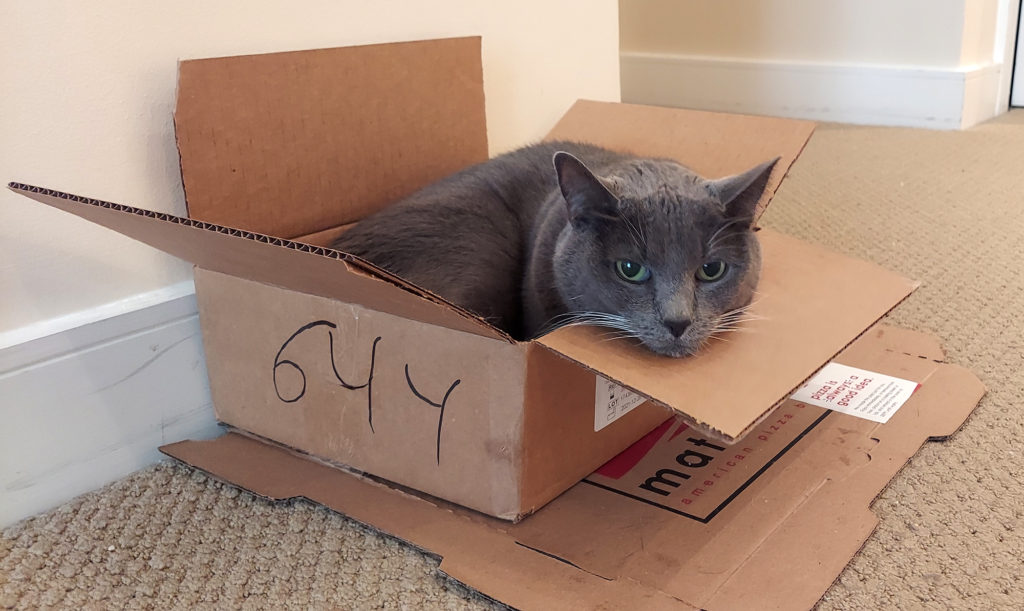
Once, while living in Mexico City, we put Kaylee in boarding while we took a short jaunt to Acapulco. We had to return early due to COVID, but the vet was calling anyway, saying our kitty was freaked out by another cat who wouldn’t stop yowling. We arrived to find her hiding in the kitty playroom, her body tucked deeply into the bottom tire in a stack.
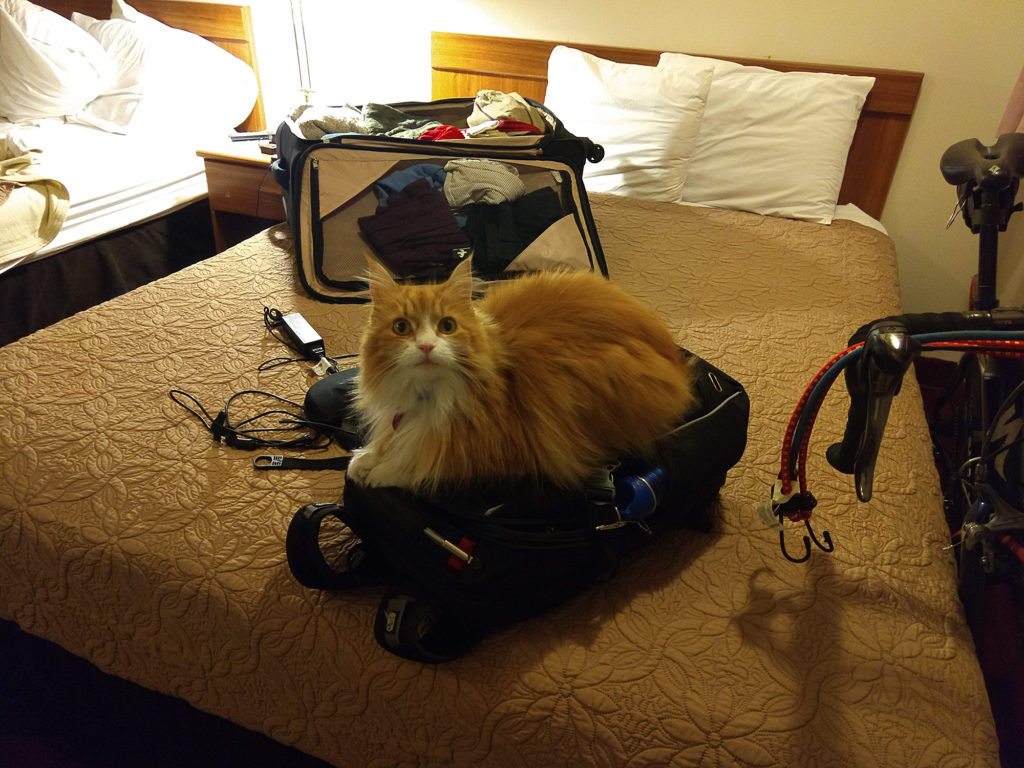
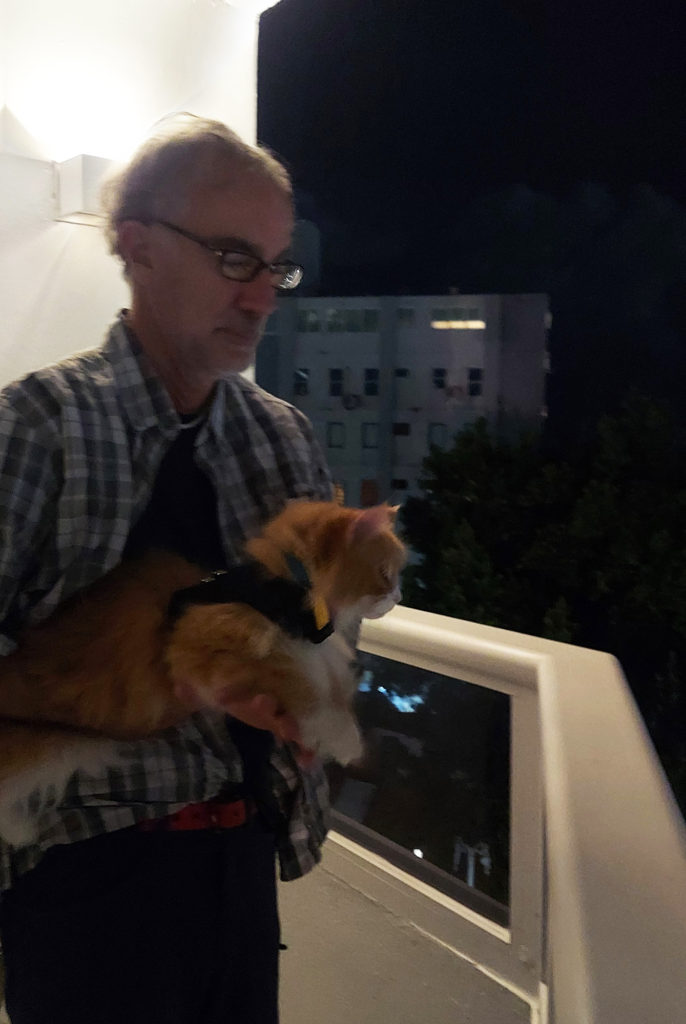
Kaylee was recently diagnosed with alopecia, after she licked all the hair off one of her furry legs. The vet said this could be caused by fleas – and told us all cats in PR should be regularly treated for fleas and heartworm – by food allergies, or by stress. We are treating her for fleas, and we’ll test for food allergies this summer if her symptoms persist. But in all likelihood, it’s anxiety. So, we make her life as easy as possible, give her tons of attention, staying home some days just to provide a lap for her to nap in, and keeping up her routines as much as we can (within limits).
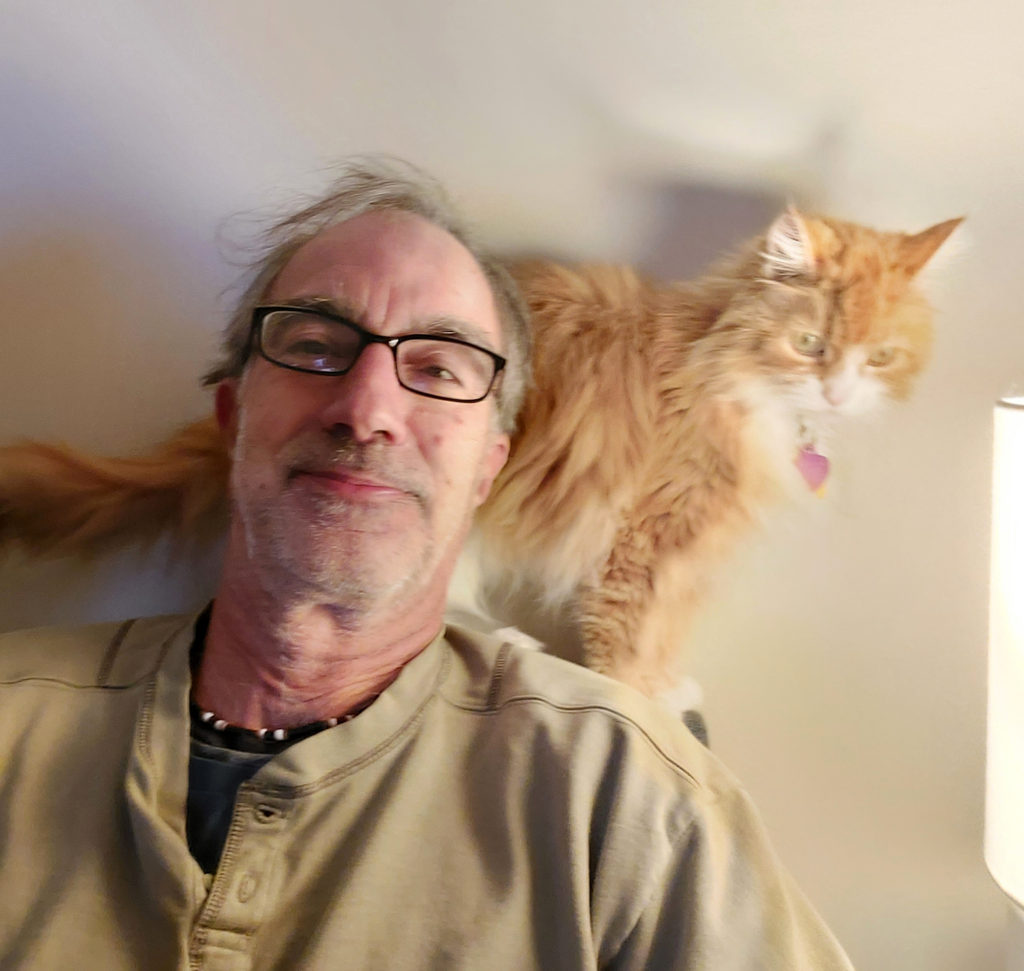
Finding Vet Services for Pets
Finding vets to care for cats in a place where you don’t speak the language well is a constant challenge. Their front claws must be trimmed regularly, they must be treated to prevent fleas and heartworm, and sometimes they get sick. The upside is that it’s usually less expensive anywhere else than in the States.
Our cat Equinox took ill a week into our Mexico City stay in early 2020. We found a vet within walking distance whose convenient office we had noted while exploring the city, and rushed him there. Fortunately, one vet spoke English, and he got the city’s best kitty cardiologist involved when it turned out our cat had hypertrophic cardiomyopathy. In humans, this condition is called “the widow maker” because often it’s often undetected until the patient, usually a man, has a sudden fatal heart attack. Alas, the same was true for our dear Noxy. He was hospitalized but only lived through a weekend, and had to be put to sleep in the middle of the night when he became agitated and had trouble breathing.
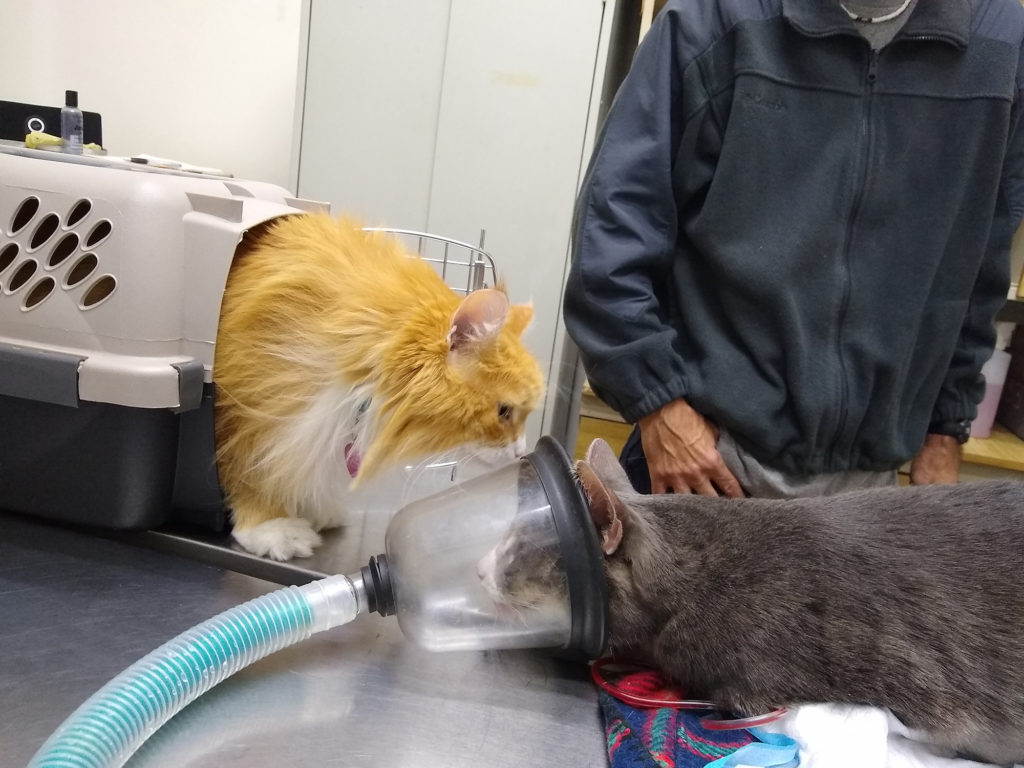
But he got excellent care. We were called in, we brought Kaylee to say goodbye to her friend, the children were called, and it was as good a pt death experience as is possible, And the cost for that care and his subsequent cremation was a fraction of the cost for the same in the States.
Stress and Health
However, the stress of traveling and then moving to a mile-high city probably contributed to his demise, and this is why I am vigilant about managing Kaylee’s stress. The vet gave us this resource for helping keep kitty stress down: https://indoorpet.osu.edu/cats/feline-life-stressors
I hope the move to Cabo Rojo in winters will give her a more settled life. Alternating between two households should be much easier than adjusting to a new home every month! And when she finally moves in with her owner, our oldest child Aryk, we will probably stick to healing aid organizations care for all the stray cats in Puerto Rico.
Meanwhile, whenever I sit down to use the computer, read a book, or watch TV, I lay Kaylee’s favorite towel across my lap and call her name. She is here in an instant, ready to cuddle while I work. In fact, she is in my lap right now!
Because despite all the stress, the most important thing I can do for my traveling cat is to give her love.


